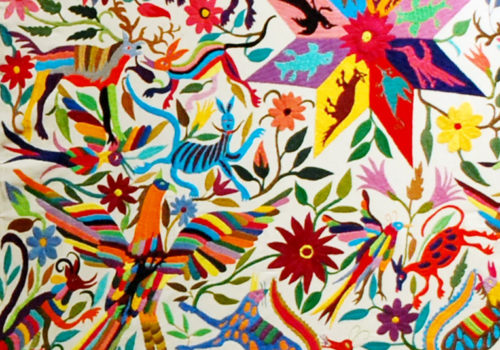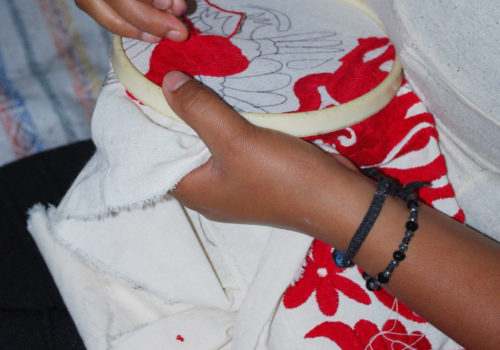Origin
There is evidence that embroidery existed in the pre Hispanic period in Mesoamerica but it underwent radical change with the introduction of European techniques and designs. It has always been traditionally women’s work, with daughters learning from mothers. Even today, most of the work is done within individual families, but there are cooperatives of women who work together to produce and promote their products.
The embroidery style now known as tenango is based on traditional Otomi embroidery of the area, but modified to create pieces to sell. This occurred in the 1960s when a regional drought severely disrupted the local economy’s dependence on subsistence agriculture. The origin of this innovation has been traced to the small community of San Nicolas in the municipality of Tenango de Doria. Originally the idea was to make and sell pepenado blouses, a kind of gathered and traditional blouse still worn here. However, these are very time-consuming to make and could not be sold for a sufficient price. Instead, embroidery elements were transferred to flat pieces of fabric. Even those sold for very little, especially at the beginning when the style was unknown. Over time, the embroidery style has been applied to tablecloths, napkins, pillow cases, bedspread, various styles of clothing and more. While the work is still primarily done by women, men have taken it up, not only in Tenango but in prison handcraft programs as well.






3 thoughts on “Otomi embroidery”
Comments are closed.